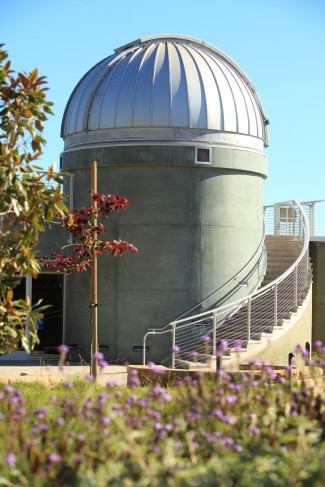Viewing to Drop in on Jupiter
By
Westmont

The gas giant Jupiter will be the focus of attention for stargazers at a free, public viewing with the powerful Keck Telescope Friday, Feb. 17. The viewing, which begins about 7 p.m., lasts several hours. The observatory opens its doors to the public every third Friday of the month in conjunction with the Santa Barbara Astronomical Unit, whose members bring their own telescopes to Westmont for the public to gaze through. In case of inclement weather, please call the Telescope Viewing Hotline at (805) 565-6272 and check the Westmont website to see if the viewing has been canceled.
Westmont physics instructor Thomas Whittemore says Jupiter and Venus are getting closer together in the night sky. “Though we will not be looking at Venus through a telescope that evening, it’s interesting to watch the closing distance between the two planets over the next month or so,” he says. “Venus will lie far lower in the southwestern sky than Jupiter and far brighter than Jupiter as well.”
Other celestial objects that may be featured include the Great Orion Nebula, M42. “This stellar nursery lies about 1,400 light-years away, but is so bright that it can easily be seen with the naked eye in a reasonably dark sky,” Whittemore says.
Whittemore says he’ll target several open clusters in Winter Milky Way since the constellations Gemini (The Twins) and Auriga (The Charioteer) are high overhead. “Among our choices will be: M35, M36, M37 and M38,” he says. “These clusters are about 2,000 light-years away but are still bright enough to be seen even in smaller telescopes. The different patterns of stars in their fields should be dazzling if the conditions are good. For these kinds of objects the 8-inch refractor telescope, rather than the 24-inch reflector, is the better-viewing instrument.”
Filed under
Campus Events, Campus News, Faculty and Staff, Press Releases